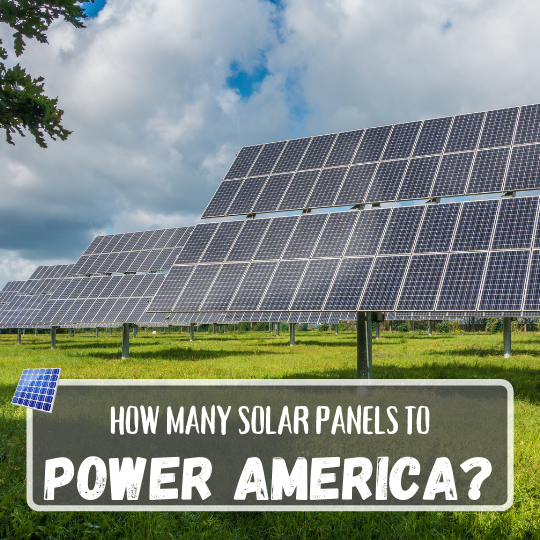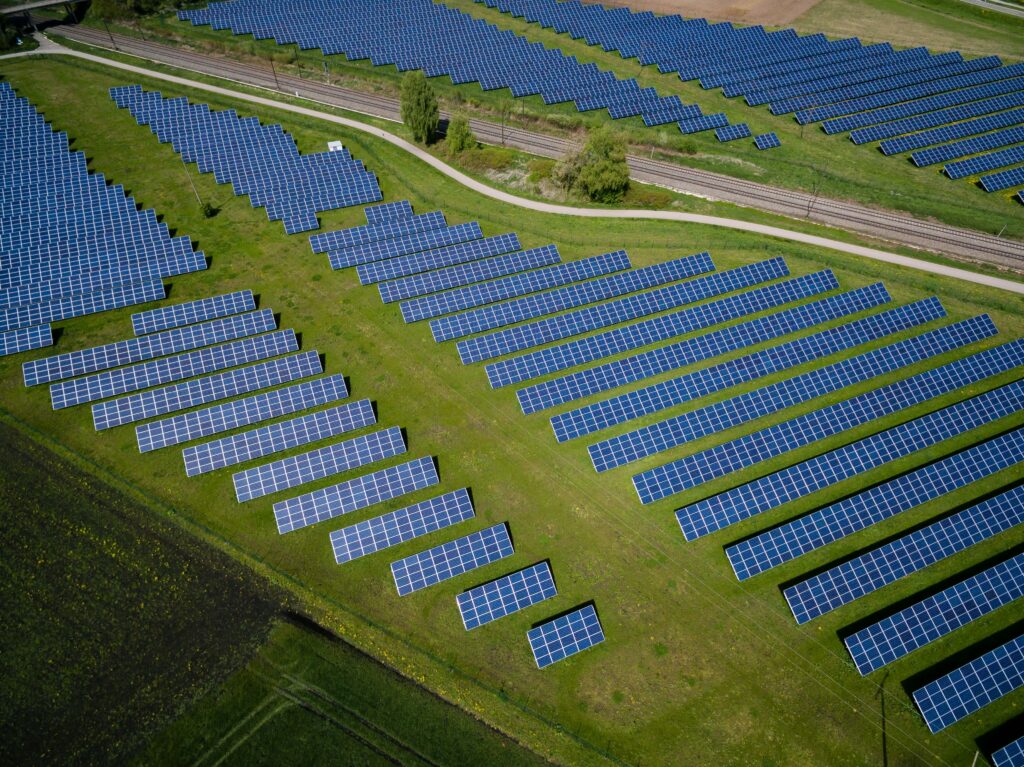
The United States of America is the second-largest energy consuming nation in the world.
Americans consume, on average, around 4,000 terawatt-hours (tWh) of electricity per year. That means each American uses about 12,000 kWh per year, or ~33 kWh per day.
Obviously, 4,000 tWh is a lot. So how many solar panels would it take to power the US? Is it possible to rely solely on solar power?
Let’s find out.
How many solar panels to power the US?

According to Elon Musk, it would take around 10,000 square miles—or 25,900 square kilometers—of solar PV panels to power the entire United States. That equates to about 7.85 billion individual solar panels, each providing about 350 watts per hour.
If you’re curious, here’s the thought process behind that answer:
Even the most sophisticated solar panels only have an energy efficiency rate to convert 23% of the sunlight that reaches them. One solar panel can produce ~350-400 watts per hour (in full sunlight at a perfect angle).
With a population of ~329.5 million people each consuming ~33 kWh of energy per day, you would need 7.85 billion panels to generate all of the electricity needed.
How much would powering the US with solar power cost?

We estimate that it would cost about $4.5 trillion to power the U.S. entirely with solar energy. However, this is a really rough estimate because it’s a much more difficult question to answer.
It’s not just the cost of the solar panels—you also have to factor in the cost of clearing fields to put them on, the labor of installation, maintenance costs, battery storage and maintenance, and potential costs from natural disasters that may wipe out fields of panels.
You also have to consider the indirect costs associated with solar energy sources. Because the sun isn’t shining 24/7—and we don’t even get 100% sunlight for much of the day in most of the country—we would need to regulate energy usage at certain times. That could mean accepting that you can’t run the microwave or other high-energy appliances after dark on certain days.
I’m not saying our climate isn’t worth these kinds of sacrifices. However, even with these sacrifices, solar still may not be enough to be our sole energy provider.
Is solar and wind energy enough to halt climate change?
As much as we might want to believe that renewable energy can power the world, it’s unfortunately not a feasible reality—at least, not yet.
Part of the problem is that even if we had enough solar farms to meet energy consumption demands, it would cause more damage than it would help.
Solar panels rely on petrochemicals from oil and natural gas to be manufactured. Creating all the solar panels you’d need to power an entire country would cause massive amounts of CO2 emissions.
Not to mention, disposing of the panels once they can no longer generate energy is both dangerous and damaging to the planet because they release unsafe chemicals.
Related Reading: Are Solar Panels Good For The Environment?
Here’s an excellent TED talk by Michael Shellenberger, a man who has dedicated his life to renewable energy and sustainability, talking about the issues of solar energy and wind energy and their potential solutions:
In other words: our best approach right now is probably to rely more heavily on clean nuclear energy while we work on innovations in other renewable energy to bring it up-to-par with our power needs while being safe to produce and maintain.
Beyond that, we may all have to accept that unlimited power may soon be a thing of the past, lest we continue destroying the planet.
What’s Next?
Here at Adventure on the Rock, we’re passionate about seeing and protecting this beautiful planet we’re lucky enough to call our home.
If you enjoyed this post and are passionate about renewable, clean energy and saving this rock we’re all living on called Earth, consider subscribing to our newsletter below. We never send spam emails—it’s a once a week email about ways we can be more sustainable or ways we can adventure and explore more of this wonderful rock we all live on.
Read Next: How to Set Up Solar for Off-Road Adventures




